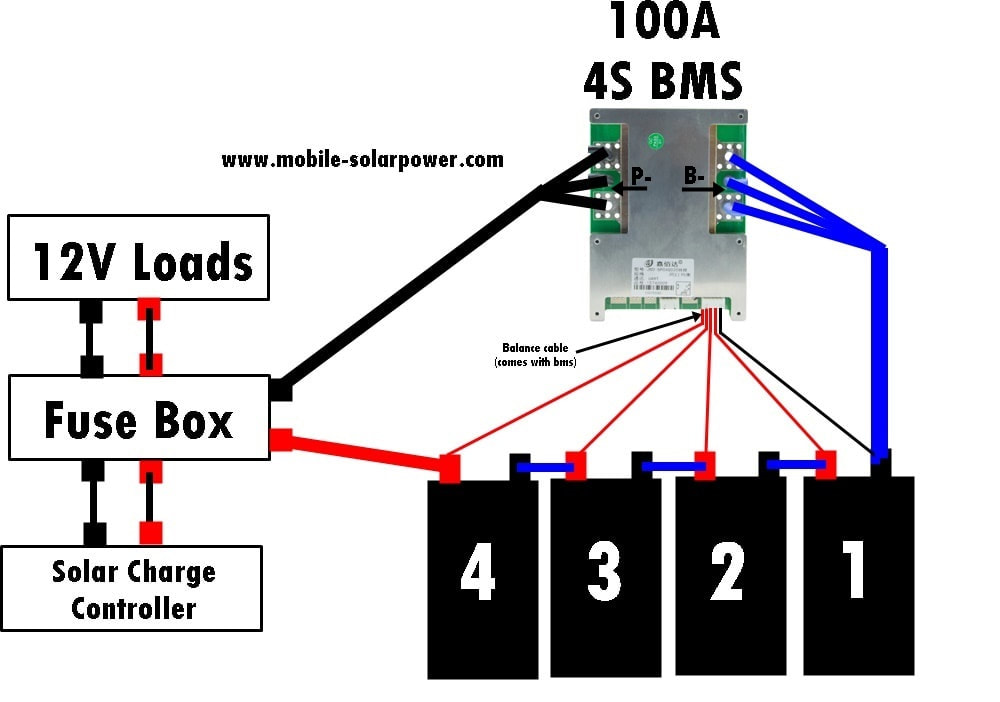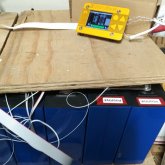If you use silver flashed copper, make sure the silver is polished before assembly, The silver tarnish is a lot less conductive than copper or copper Oxide. Presumably, the silver will not tarnish where it is pressed against the terminals (and/or itself), but I can't be sure of that.
I generally just use the rectangular copper bar from online metals.... It is a lot cheaper.
On the inner 'boxed' busbars, Put the serial bars down first. They are likely to be carying more of the current and therefor should be directly on the cell terminal pad. (The parallel bars will only carry enough current to keep the voltage equalized amoung the parallel cells).
View attachment 30064
If Possible, I would use heaver duty bus bars on the long 8 hole busbars. This will help prevent voltage changes between the cells. To explain why, the following diagram models the resistance of the bus-bar, the current and voltage drops along the bus bar. (This modeling is a first order approximation. A better model would seperate the copper resistance from the connection resistance to each terminal). As you can see, in this model, the voltage drop across the whole busbar is 16 times the voltage drop between terminal 1 and 2.
View attachment 30041
The question then becomes: How big does this voltage actually get?
Lets assume that with the connections to the terminal pad and the copper you have .2 mOhm (.0002 ohm) resistance between any two adjacent terminals. Now lets assume you are pulling 100 amp total from the bank. The 100 Amps battery draw would show up between the positive and negative, so in this model 4i=100A. That means i is 25A. Consequently v is .0002ohm x 25A = .005V and the total drop from one end of the bar to the other is 16x.0025=.08V. (The voltage will increase/decrease linearly with current)
Is 0.2mOhm higher than reality? I don't know but .2mOhm is certainly not a large number.
Is .08V a killer? I don't know, but it is certainly getting in the range to think about.
The bottom line is that anything you can do to reduce the resistance on the long bus-bars is important in order to keep the voltage at the cells as similar as possible. Having a single bus-bar instead of stacking 2-hole factory bus-bars is a
huge improvement (Far fewer connections). Making the single bus-bar extra thick/wide will help as well.
When you set this up, it would be interesting to put a sensitive voltmeter across the length of the long busbar and see what drop you get under a heavy load.





